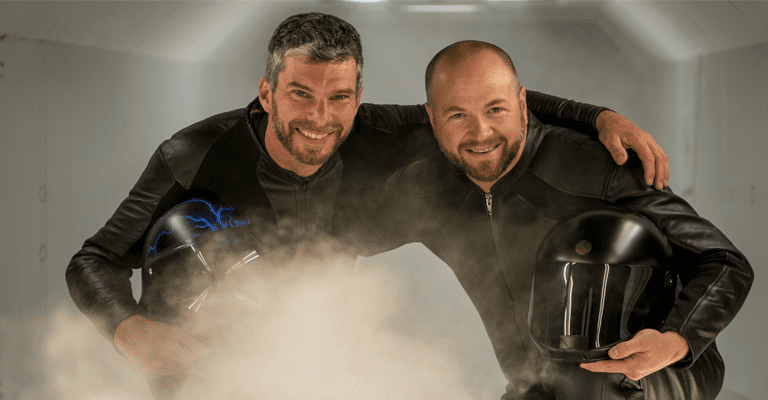In September 2017, gravity sports enthusiast Pete Connolly became the first person in history to exceed 91 mph on a skateboard, making him a world record holder in downhill skateboarding as well as deeming him the fastest downhill skateboarder on the planet.
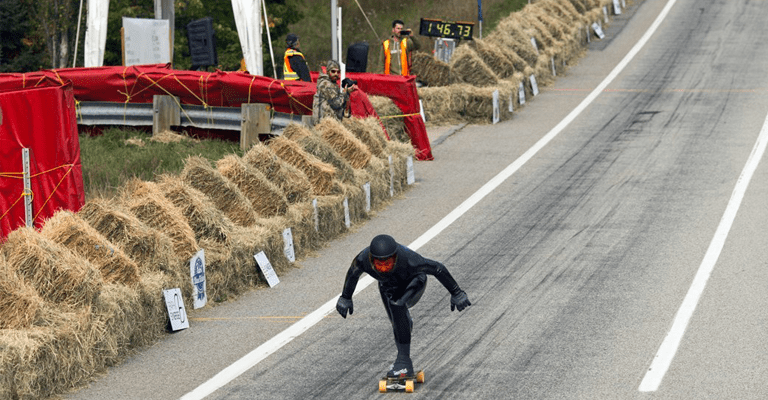
This fastest skateboard speed downhill (standing) record was achieved at the L’Ultimate Descente competition in Quebec, Canada. The extreme event invites masters of all things gravity sports from skateboarders to gravity cars to try to achieve the fastest speeds humanly possible, and the chance to make history.
How Was This Possible for Pete?
In order to become the world record holder for downhill skating, a lot of time, effort, and aerodynamic design factors were accounted for and evaluated.
“As you might expect we get fairly into the aerodynamic aspects of our sport when pushing the top speeds. To set the record, I designed and produced an aerodynamic leather suit to skate in and did a lot of real-world testing in Switzerland to gather data on a road with very consistent conditions.” – Pete Connolly
In order to optimize his suit, board, helmet, and body position, Pete underwent multiple sessions of real-world and wind tunnel testing.
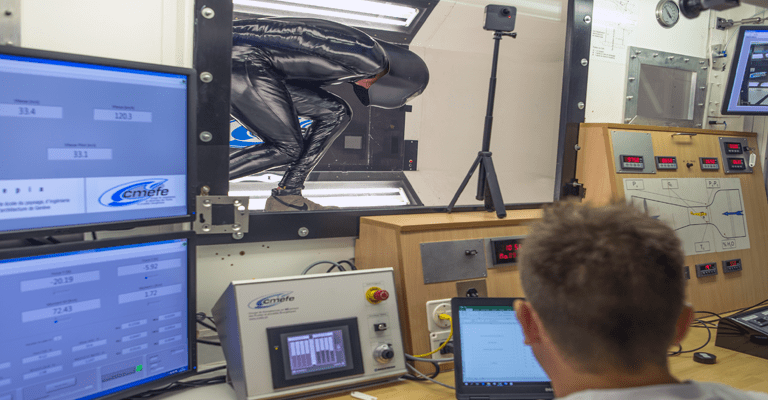
Wind Tunnel Testing: Benefits and Limitations
With a new goal set, Pete and his team went to the HEPIA wind tunnel in Geneva, Switzerland to further undergo testing of equipment and body positions to ultimately reduce drag and any areas of recirculation. Unlike other resistance forces like friction, drag depends directly on the drivers speed and increases with the cube of velocity and linearly with frontal area.. Wind tunnel data was used to determine where drag and air resistance was creating a negative impact.
“My time in the wind tunnel was greatly beneficial, while I managed to improve my overall drag training in the tunnel, it shared the same limitation as real-world testing; you can only see the overall drag we create… My goal with modelling and running simulation is to establish if there are any key hotspots that we can hone in on to result in the best improvements possible, rather than investing into improving an aspect of our body positions or equipment that may not make the most difference.” – Pete Connolly
![Aerodynamic design testing in HEPIA wind tunnel in Geneva, Switzerland]](https://www.simscale.com/wp-content/uploads/2019/03/wind_tunnel_2.png)
Pete and his team decided to combine their wind tunnel testing efforts with online simulation, to identify high benefit/quick fix areas with a focus on improving these aspects. By utilizing CFD analysis, future training, development, and testing can be more targeted to essentially increase speed by combining real-world, wind tunnel, and online simulation efforts—the aerodynamic testing trifecta.
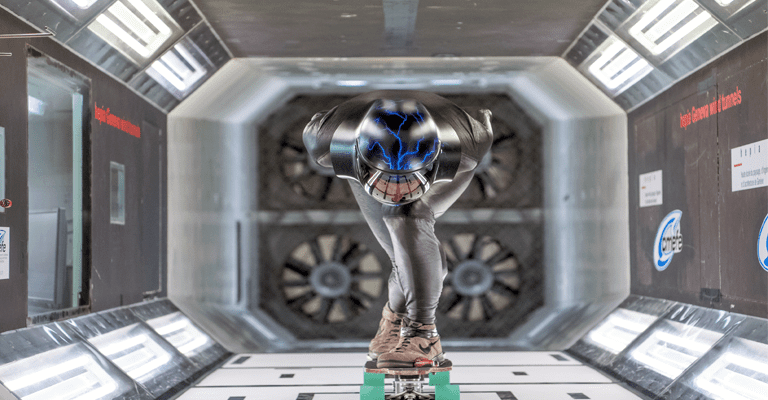
The New Challenge: Online Aerodynamics Simulation
To jump-start this process, World Champion Downhill Skateboarder and industrial design specialist Martin Siegrist lent his assistance by creating a full 3D scan of Pete and his board in his record-breaking stance. Using this CAD model, Pete then got in touch with SimScale to begin some initial online simulation to integrate his real-world and wind tunnel data with virtual insights.
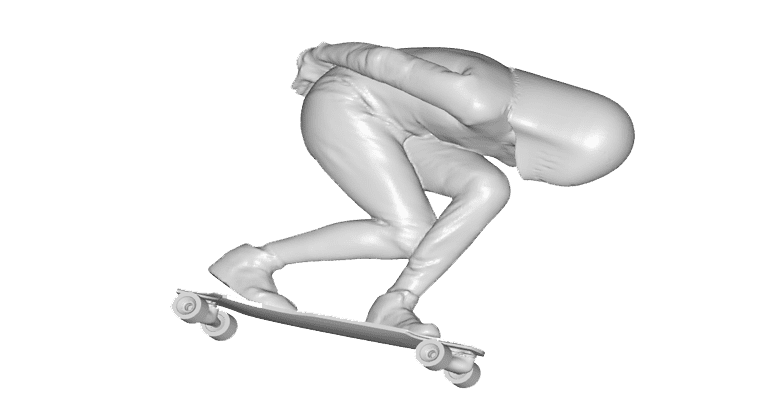
Downhill Skateboarding Meets SimScale
Pete’s need for speed brought him and his CAD model to SimScale to virtually test the aerodynamics of his kit.
“What I wanted from using simulation was to learn what part of the design to focus on to make the biggest difference. You can spend a lot of time focusing on all the little things to make moderate changes, but with simulation, you can pinpoint the area that needs to be modified the most.” – Pete Connolly
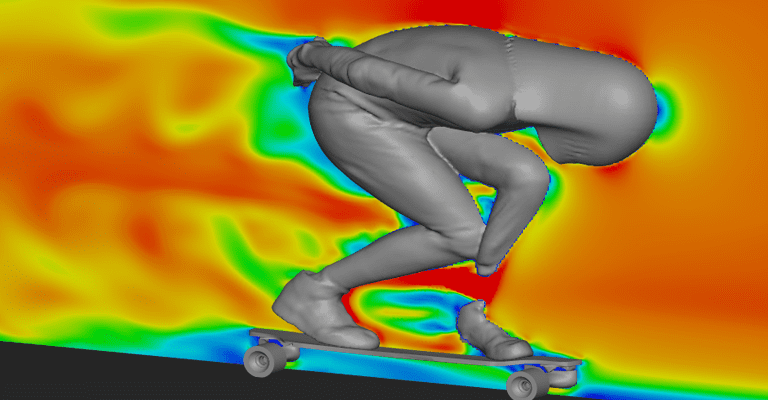
The Initial Simulation Results
The external aerodynamic analysis found areas of recirculation on Pete’s body from post-processing the results of both velocity and pressure plots at various planes in the transient simulation.
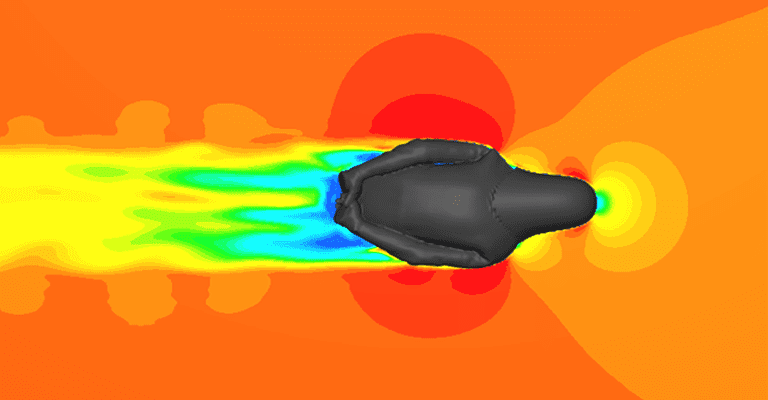
What’s Next for Pete in Downhill Skating?
With the new findings from the simulation data, the next steps lead to another full body scan testing different hand and board modifications, followed by more real-world, wind tunnel and virtual testing—and hopefully some more broken records for downhill skateboarding to follow!
“For me I wish to push it even further and break the 100mph—quite an ambitious goal but one I feel is achievable… improving on my current record is something I already believe I can achieve.” – Pete Connolly
Pete Connolly and Damian Andrey in the wind tunnel. (Source: Maxime Schmid @maximeschmid)
To learn more about simulation and aerodynamics in sports, check out our blog about cycling aerodynamics.
We’ll be following Pete on his journey, and you can too by following his blog story here.
